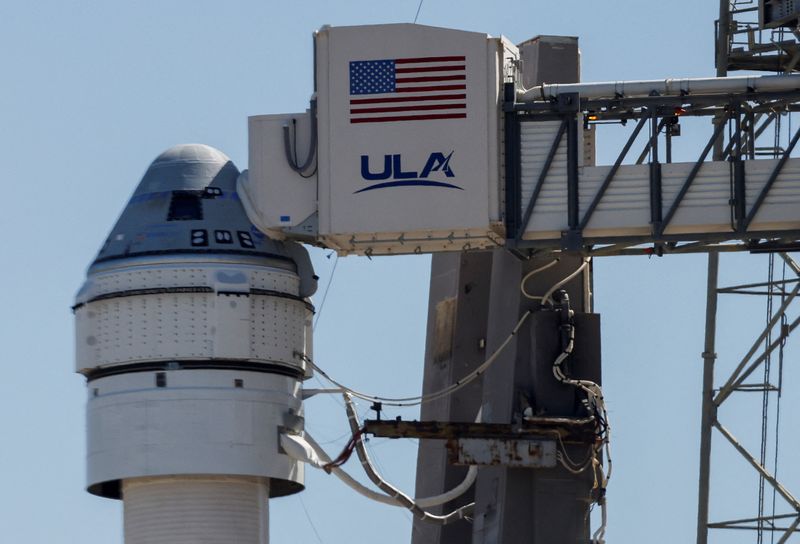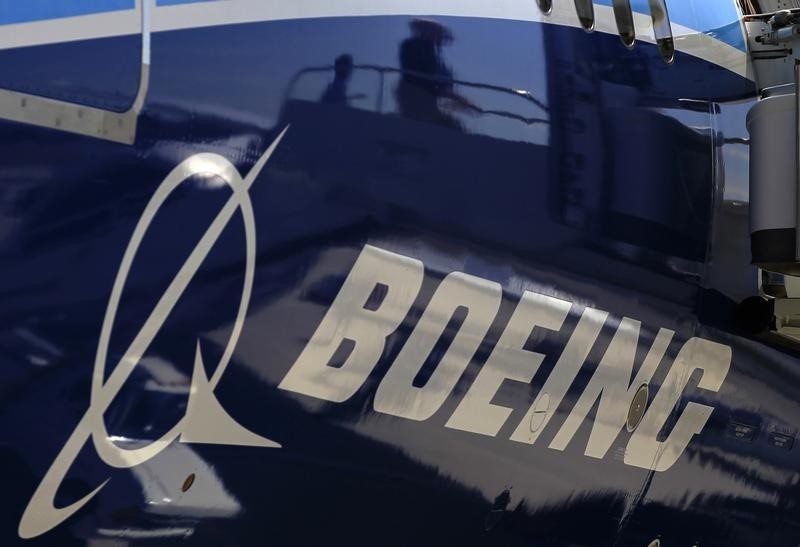By Joey Roulette
WASHINGTON (Reuters) – Boeing (NYSE:) and NASA have squelched two technical issues with the company’s Starliner spacecraft, including a “design vulnerability” that required a workaround to get the capsule back on track for its first mission with two astronauts to space. Officials said this on Friday.
Starliner’s first crewed mission, a high-stakes test now scheduled for June 1, was derailed earlier this month by a small helium leak discovered in the propulsion system hours before it was set to take off from Florida. Two weeks of additional investigation determined that the leak did not pose a major risk to the astronauts, officials said.
“This is really not a safety issue for ourselves, and we believe we have a well-understood condition that we can manage,” Boeing CEO Mark Nappi told reporters at a news conference.
Starliner’s long-delayed first crewed flight, with NASA astronauts Suni Williams and Butch Wilmore on board, is a final test mission before NASA can certify the spacecraft for routine astronaut travel to and from the International Space Station. It would be the second American crew capsule, joining SpaceX’s Crew Dragon, which began flying people in 2020.
Boeing and NASA’s investigation into the helium leak led engineers to uncover an additional problem in Starliner’s propulsion system that NASA commercial crew chief Steve Stich called a “design vulnerability.”
Modeling showed that a successive but highly unlikely series of problems during a mission could eliminate the capsule’s backup thrusters, preventing it from returning safely to Earth. A software solution provided a workaround for the mission, but Boeing and NASA will discuss whether a deeper redesign is needed before future flights, officials said.
“It’s supported by test data, it’s supported by flight data, and the guidance and navigation modeling have reinforced that this technique will work,” Nappi said, adding that the astronauts tested the system after the fix.
This broader issue and ad hoc resolution prompted NASA to call for an additional Flight Readiness Review, a comprehensive, daylong meeting between agency officials, Boeing engineers and independent analysts to justify that Starliner is safe to fly.
That meeting is scheduled for Wednesday, three days before Boeing’s target launch time of June 1, 12:25 p.m. ET. If necessary, Starliner also has options to fly on June 2, 5 and 6.
Boeing, which initially tried to launch Starliner on May 6, is under pressure to meet one of those dates in early June.
Anything later than June 6 could mean weeks or possibly months of more delays as some perishable goods would need to be replaced on Starliner and its Atlas (NYSE:) 5 rocket, built by the Boeing-Lockheed joint venture United Launch Alliance ( ULA).
That would clash with other planned priorities ULA has on its launch pad, such as Amazon’s (NASDAQ:) first launch of its Kuiper satellites and ULA’s second flight of its new Vulcan rocket, a long-delayed demonstration that could to launch Pentagon missions.
Boeing is a longtime NASA contractor that has built modules for the decades-old International Space Station but has never before flown humans into space, a feat that has become elusive amid ongoing struggles in its Starliner program.
Years behind schedule and with $1.5 billion in unplanned development costs, a Starliner success is desperately needed as Boeing deals with the relentless crises in its aviation business.

Starliner failed an attempt to reach the ISS in 2019 and returned to Earth about a week ahead of schedule due to dozens of software, technical and management issues that reshaped Boeing’s relationship with NASA.
The spacecraft managed to perform another flight to the ISS in 2022.


